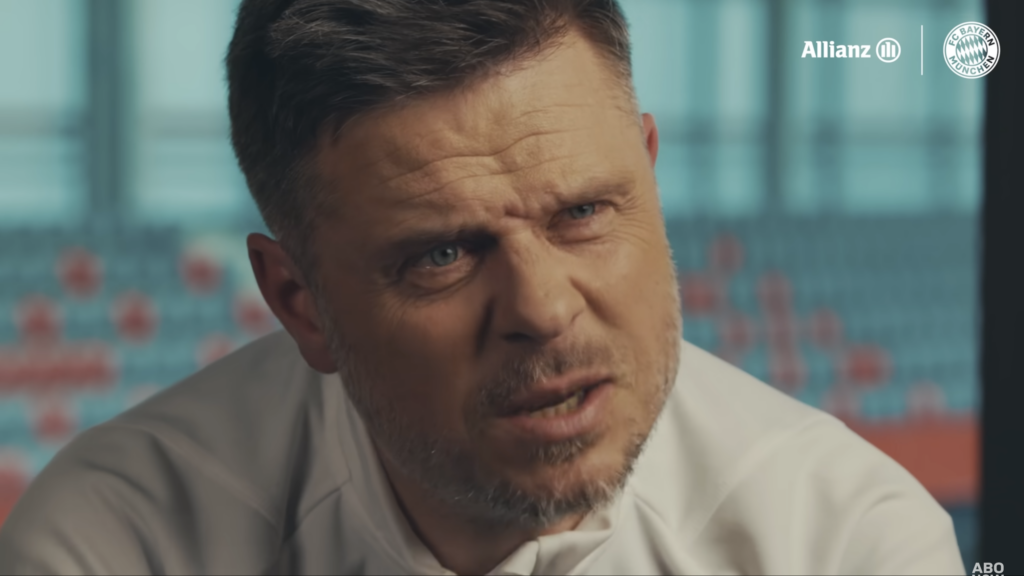Frauenfußball: Der lange Weg zur Akzeptanz (2020)
The documentary by SWR “Frauenfußball: Der lange Weg zur Akzeptanz” is from the year 2020 and it is about the development of women’s soccer throughout time. A very journalistic way of telling a story is being used for this documentary. It gives a good overview on the topic, but fails to go deeper. Due to the many different topics mentioned, none of them is discussed in greater detail. A lot of people are being interviewed in the documentary, which makes it hard to remember who is who. I would have focused on a few important stories as well as a few relevant people. I believe the film makers wanted to include as much as possible, and it backfired. Since many recordings were shown and there was hardly any film material that was self made. Due to that the documentary has not helped me a lot with my sports documentary. Seeing as I am trying to find good transitions, camera angles, ideas for b-roll shots, ideas for post production, inspiration for sound design and many more. For transitions a glitch was used most of the time, which I will not do. I did get an idea for a b-roll shot, which is filming the grand stand at a rather low angle.
The documentary did raise a question, which is whether I am going to have a lot of shots on goal? I should definitely keep in mind that it is important to have many shots, because they are exciting for the viewer. It should also not be overpowering because it was really noticeable in this documentary. Furthermore, the documentary raised another question which is, whether I will have a narrator for my documentary or not? I have always imagined that the interviews I will conduct will be enough to tell a story. When there is a narrator, he or she can function as a guide throughout the story. Which could also help bring the story together as one. It is something to think about.
Mehr als 90 Minuten presented by Allianz (2024)
The documentary series “Mehr als 90 Minuten presented by Allianz” is from this year by Björn Lentföhr and it is about the women’s football team FC Bayern Munich. This episode is mostly about the player Georgia Stanway and the football club’s match against VfL Wolfsburg. Other players are also interviewed throughout the documentary. The interviews take place at different locations but most of the time the players are sitting on a couch. Some players are also interviewed on the benches in the changing rooms. That is the location, I would like to interview the players in for my documentary. In the documentary there are jerseys hanging in the background. Of course it is due to marketing reasons but it might be a good idea if the changing room is too bland otherwise. In the beginning of the documentary, there are fast shots shown that give an idea what is to come in the documentary, a foreshadowing in a sense. I like that a lot, and I am thinking about doing the same for my documentary. It builds suspense and makes the viewer excited for the rest of the film.
This documentary has inspired me concerning b-roll shots, interview questions, sound design and colour grading. I also like the overall atmosphere it brings about. There is great camera framing in the interview of the trainer, as you can see here:

There are a couple b-roll shots, I will also use in my documentary:
- b-roll shots of players running towards the camera
- b-roll shots of players talking to each other in the changing room
- b-roll shots of a player from the back holding the ball
- b-roll shots from a player putting the ball on the penalty spot.




There is also a shot of the stadium from afar. This shot has a great impact on the viewer because stadiums look impressive from the top or the side. It would be great if I were allowed to fly a drone up the stadium of the football club I am going to film. I should ask the people in charge about that.

While watching, a few interview questions came to mind:
- What were you like as a child?
- What is football about for you?
- Who is your role model?
- What have you always struggled with?
- How are you getting along with the other players?
In the documentary, there was slow motion used from time to time to emphasise certain events and increase suspense. This is a useful tool, I will remember during the post production of my own documentary. The sound design is rather classical for a sports documentary I would say, with these almost theatrical elements, when the music builds up and up and up. I enjoy it a lot and it definitely works for this documentary. The colour grading is really strong by empathising the colours green and cyan and I will come back to it when colour grading.
Born for this: Licht und Schatten (2023)
I also watched “Born for this: Licht und Schatten” from 2023 by ZDF which is a documentary series about the women’s football national team of Germany.
A few things I could take away from it:
- Colour grading: brings out the colour cyan
- Shots: b-roll shot of the team bringing their fists together and throwing them in the air
- Effects: Zoom effect in minute 10:51





*only available in Germany or with VPN